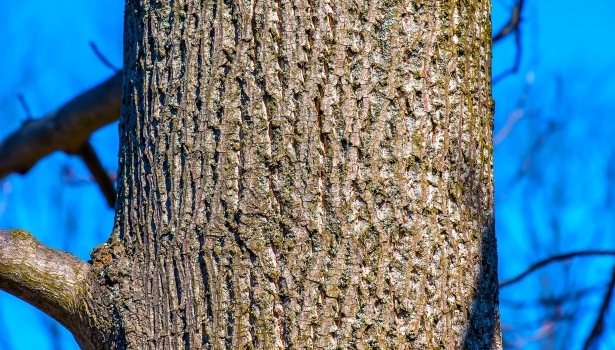Researchers have discovered a new type of wood that is better able to combat rising levels of CO₂ in the atmosphere.
Have you ever heard of the tulip tree? If not, you should: two researchers from the universities of Cambridge and Krakow have just discovered the unique characteristics of this third type of wood by studying its structure.
The Tulip Tree: A Majestic Tree with Tulip Flowers
It is a majestic tree native to North America, which can reach an impressive height, often between 20 and 30 metersor even more.
The leaves are large, uniquely shaped, almost square, with a cut-out appearance. four lobes (like a vaguely tulip-shaped silhouette). Their color is light green in spring and summer, then they become bright yellow in autumnoffering a magnificent seasonal spectacle
Flowers appear in spring and are shaped like tulip (hence the name), about 6 cm in diameter. They are yellowish-green in color with touches oforange at the base of the petals. These flowers are often difficult to notice because they grow high up, at the ends of the branches.
The bark of the tulip tree is gray and smooth when young, but becomes more rough and cracked as it ages. This tree has a straight, slender trunk, with branches that spread horizontally, forming a broad, regular crown.
Hardwoods and softwoods
They call this new type of wood the « midwood ». In fact, the thousands of existing tree species were usually divided into two categories: the hardwood of deciduous trees such as maples and oaks, which take decades to mature, and the softwood of conifers such as pines and firs, which grow quickly.
But the two researchers’ analyses have allowed them to discover what they consider to be a third category, “midwood”. Its worthy representative: the tulip tree (Liriodendron tulipifera), descended from a lineage dating back 50 to 30 million years. A period that has seen significant changes in terms of CO₂ levels in the atmosphere.
Read also – Man and the forest: what alliance in the face of climate change?
Natural carbon sinks
In fact, the trees, real “natural carbon sinks”are able to absorb carbon from the air and sequester some of it in their wood. But the tulip tree, found in the mid-Atlantic coast of the United States, contributes to forests dominated by this species storing two to six times more carbon than those where other species predominate.
“This discovery could prove valuable in the fight against the increase in carbon dioxide levels in our Earth’s atmosphere, the main cause of climate change.”the researchers believe. This superior capacity of the tulip tree to store carbon from the atmosphere would be due precisely to the nature of its wood, neither hard nor soft.

Larger cellulose fibers
This structural difference lies in its « macrofibrilles », fibers composed mainly of cellulose, the basic chemical element of wood. Here they have a diameter of 22 nanometers (billionths of a meter), compared to 16 nm and 28 nm for hardwood or softwood species. It is also these fibers that allow these trees to grow.
Researchers will now have to determine whether the apparently unique structure of the tulip tree’s wood is the only reason why this tree would be the “king of carbon capture”. It also remains to be seen whether this is a unique case or whether there are other trees “medium wood” across the world.
Read also
Forest Management – The Clearcutting Disaster
consoGlobe also recommends…
Source: www.consoglobe.com


